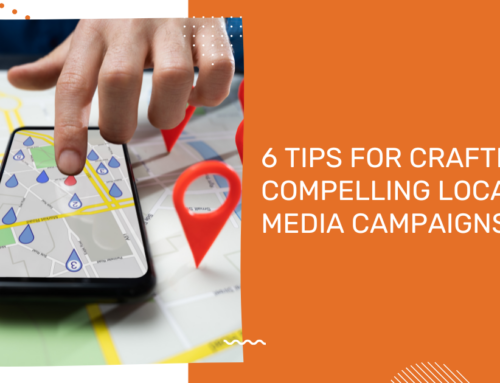Welcome back to our series on brand experience for pizzeria owners. Having explored brand personality in our last article, we will discuss brand storytelling today. In this installment, you’ll learn the art of crafting a powerful brand story for your pizzeria!
What Is a Brand Story?
Before diving into our tips on brand storytelling, let’s start by defining what we mean by brand story. According to the marketing experts at HubSpot:
“A brand story recounts the series of events that sparked your company’s inception and expresses how that narrative still drives your mission today.”
And according to Semrush:
“A brand story is a summary of your company’s history, mission, purpose, and values, with a narrative structure that brings it to life.”
These definitions show that a brand story is an engaging and relatable way to tell people about your pizzeria. It includes:
- WHAT your business is
- WHO you serve
- WHY you do what you do
- HOW you do it
But most importantly, a brand story communicates all these things in a way that connects emotionally with your audience. In other words, your brand story will convey facts, but it does so in a way that touches on emotions and draws your prospects and customers into your business. More than just your company’s history, your brand story can convey your passion, dedication, and what makes your pizzeria unique.
3 Tips on Brand Storytelling
Now that you have a general idea of brand storytelling let’s share a few impactful tips for creating your brand story.
1. Think About Structure

A clear structure is the backbone of a good story. HubSpot suggests a simple structure with three key elements:
- Status Quo: This is where your story begins. It sets the scene by explaining the world as we know it before your business stepped in.
- Conflict: A good story needs conflict. This is the challenge or problem that you encountered in the status quo. It explains why your pizzeria came into being or why you had the idea to start the business in the first place.
- Resolution: The resolution is how your pizzeria solved the conflict. What changes did you bring about, and what is the emotional payoff for customers now that your business exists?
To understand how this works in practice, check out this HubSpot article for real-life brand story examples that follow this structure. For a food-related example, you can also see this structure in the story of the light ice cream brand Halo Top:
- Status Quo: Ice cream options in store freezers are full of calories and sugar.
- Conflict: Light ice cream options exist but don’t taste like ice cream.
- Resolution: Halo Top created an entirely new category of ice cream, enabling people to eat more ice cream and enjoy delicious flavors that actually taste like ice cream.
Another common (but more complex) example of brand storytelling structure is the hero’s journey. Detailed by the Content Marketing Institute, this structure takes the traditional 12-stage hero’s journey and transforms it into ten steps for creating a brand hero’s journey.
- Step 1: The conventional market
- Step 2: The challenge
- Step 3: The rejection of the challenge
- Step 4: Appointment of the sage
- Step 5: Crossing into the unfamiliar
- Step 6: Map the road of challenges
- Step 7: The final challenge
- Step 8: Looking back
- Step 9: The final reward
- Step 10: The celebration
You’ll notice that the hero’s journey is much more complex than the first structure, so you may not have space (or even need) to convey all of these steps. As you review the hero’s journey, think about distilling the essence of the story into impactful moments that can be communicated quickly and effectively in your marketing materials, including your home page, about page, social media bio, social media posts, videos, advertising, etc.
2. Incorporate Elements of an Engaging Brand Story

As you’re thinking about what you’ll include in your brand story and how you’ll structure it, you might wonder – what makes a good brand story? Semrush has identified several elements that make for powerful brand storytelling:
- Empathy: Your story should resonate personally with your audience. It should demonstrate that you understand their needs, desires, and challenges, and they should be able to see themselves in your story.
- Distinct Voice: Your story should be told in a voice that is uniquely yours. This should be easier to do if you followed our advice in the last article for creating your brand personality.
- Authenticity: Your story should be authentic, honestly conveying information about your company in a way that builds trust and credibility.
- Consistency: Your story may evolve, but the essence of who you are and what you stand for should remain consistent over time and across your marketing channels.
- Call to Action: A powerful brand story doesn’t end—it invites the audience to take the next step. Whether the call to action is to try your pizza for the first time or to join your loyalty program, your story should inspire action.
In our previous example of the ice cream brand Halo Top, you can see that:
- The story includes elements of empathy—understanding customer challenges (unhealthy options and light ice cream that doesn’t taste like ice cream) and desires (being able to eat more ice cream!)
- It is told in a unique and relatable brand voice
- It includes company history and achievements that build trust and credibility
- It ends with a CTA to buy the ice cream online or in store
Halo Top’s brand story is compelling, relatable, and demonstrates all the essential elements of powerful brand storytelling.
3. Do More Research

Our final tip is an admittance that we can’t possibly cover everything you need to know to create your brand story in one article. If you need more guidance, take advantage of the many online resources. Here are some to get you started:
- Brand Storytelling Resources: This helpful LinkedIn article has a comprehensive list of books, articles, podcasts, videos, and online courses to help you with your brand story.
- Brand Story Templates: This link has 14 downloadable templates that guide you through creating your brand story.
- Hero Guide AI: This AI tool can help you generate your brand story simply by entering details about your business, the problems it solves, and who your customers are.
A Pizzeria Brand Story Example
Too often, businesses tell their story as a series of chronological events conveyed in paragraphs or a timeline format. While history is important, this approach doesn’t create a compelling brand story that puts the consumer into the story and draws them in. As interesting as you think these details are, your customers may find the information dry and uncompelling. They want a story that draws them in and includes them too.
With our brand storytelling tips in mind, seeing an example of how a pizzeria may convey its brand story to its audience online might be helpful. As we explored various pizzeria brand stories, we truly enjoyed the example on Pizza Hut’s website and here’s why:
It creates a strong statement of who the brand is and how it wants to be portrayed/understood.
- “We’re the pizza company that lives life unboxed.”
It includes real examples of how the brand has innovated over the years—in a way that communicates legacy and connects with customers.
- “We’re not for people who want to blend in: pushing boundaries is part of our heritage.”
It connects with customers on an emotional level.
- “At Pizza Hut, we don’t just make pizza. We make people happy. Pizza Hut was built on the belief that pizza night should be special, and we carry that belief into everything we do.”
It explains the origin and growth of the chain in a simple way that demonstrates the brand’s values and promise:
- “Soon the restaurant grew. Why? The pizza was awesome. The service felt like home. And the customers were treated like family.”
The page does include a timeline for those interested in the company’s chronological history, but it does so in an interesting way.
- The details are shared in an intriguing infographic instead of dense paragraphs.
We offer this as an example of a compelling pizzeria brand story. While you shouldn’t copy this example, you might find it helpful in brainstorming what to include in your brand story and how to convey it on your website.
Developing Your Brand Story

We hope the tips and examples shared here give you a starting point to create your unique brand story. If the process sounds daunting, you can get help from a writer or marketing professional. If you feel like you’re ready to give it a try, remember to get feedback from employees and customers along the way. Revise, revise, revise—and don’t get discouraged! It will likely take time and a lot of editing to make a story that is concise, compelling, and resonates with your target audience.
As we continue this journey into brand experience, next time, we’ll discuss the specific elements you need to create a powerful pizza brand experience. You’ve got a lot of work to do on your brand story in the meantime, so good luck, and we’ll see you again soon!



